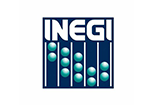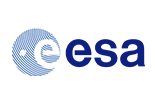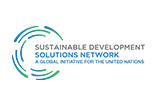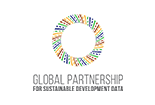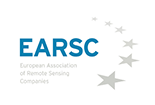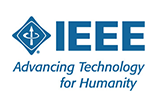Earth Observation for Climate: An Overview of the Commercial Landscape
Aravind Ravichandran is the founder of TerraWatch Space, a market intelligence and strategic advisory consulting firm focused on Earth observation (EO). He holds a bachelor’s in computer science, a master’s in international business, and a second master’s in space studies. In addition to academic experience, Aravind has over ten years of cross functional, cross-domain international work experience in software and the space industry. Examples of these experiences include working as a software engineer at Amazon India on the Kindle Software Team and as a business developer and salesperson at the German software startup, Applause.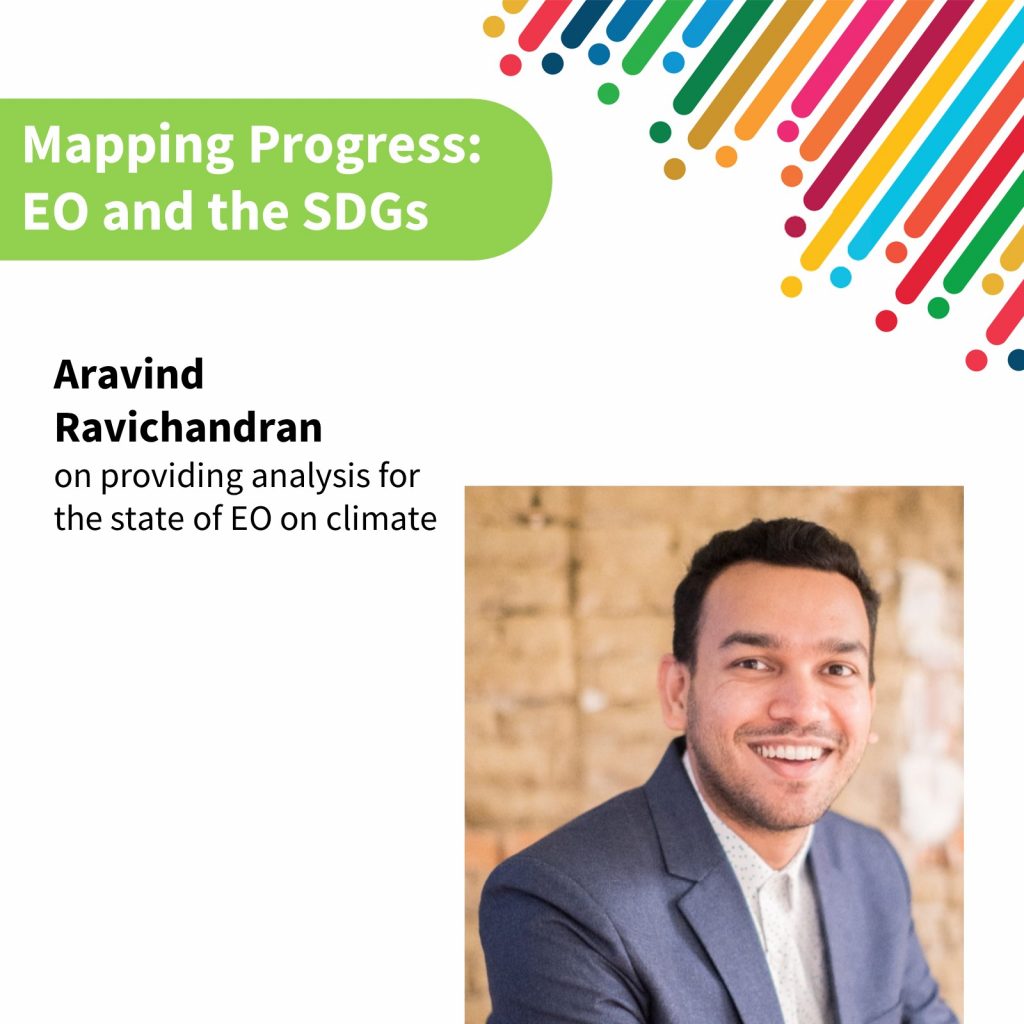
Yet it was not until his role as a strategy consultant at PwC Space Practice, which focused on EO, that he noticed a gap in the understanding of satellite data adoption. This gap ultimately led to his creation of TerraWatch Space which provides insights into the EO sector and its application through blogs, newsletters, and podcasts. In addition, TerraWatch also offers consulting services to guide EO companies, space companies, and end-users on adopting and utilizing EO technology for various applications.
To receive more analysis and insights on the EO sector, subscribe to the TerraWatch Space newsletter and follow Aravind on LinkedIn.
In this piece, Aravind provides his analysis of the state of EO for climate, particularly with a commercial lens, including an overview of the applications of EO for climate, the EO market segments, and the EO commercial landscape.
This is the fourth entry in our series “Mapping Progress: EO and the SDGs,” which highlights voices from the EO4SDG community and beyond.
Overview
Climate change is no longer an expected phenomenon that is forecasted for the future, but rather it is the current reality, with its effects being felt everywhere on the planet. Wildfires in Canada are still burning, global temperature records are continuously being broken, and sea ice levels in the Antarctic are at record lows. More importantly, we are seeing increasing proof that climate change is the reason behind most or all of these events.
From a commercial standpoint, there is a lot at stake: crop failure risks are high, infrastructure risks are out of date, and carbon markets are on the rise. As a result, climate policies are being implemented to report climate-related risks, nature and biodiversity related risks, supply chain risks, and so on.
EO is one of the most critical technologies for climate. It allows us to understand how the climate is changing by monitoring the atmosphere, land, and oceans (summarized as the Essential Climate Variables). EO also supports our adaptation to these climate changes by forecasting the weather, modeling climate risks, facilitating the climate mitigation process by measuring greenhouse emission levels globally, and enabling the transition towards renewable energy sources.
Note: A segment is the positioning on the EO for climate commercial landscape, shown below (data vs solutions vs applications) and a vertical is the selected industry of choice for the targeted climate application (agriculture vs insurance vs energy etc.). The term commercial includes every market opportunity with a commercial transaction (compared to openly available data from governments provided as a public good). EO is the sector that encompasses satellite data and value-added services derived from said data.
Earth Observation for Climate: Commercial Applications
In general, EO technologies have several applications across different sectors. However, in this article, the commercial applications of EO for climate are presented based on five broad market verticals, shown in the figure below: Agriculture & Forestry, Energy & Mining, Infrastructure & Utilities, Insurance & Finance, and Environment. While some of these applications have already gained mainstream adoption of EO in the private sector and public sector, others are still in the emerging phase, where the value of EO is currently being evaluated.
The key difference in the figure below is the contrast between the traditional applications of EO for climate and the emerging ones. For instance, applications such as forest monitoring, vegetation monitoring, and weather and disaster management are traditional. In other words, they have been feasible and available for decades, thanks to data from missions such as Landsat, GOES, and MetOP. Given the context of climate change, these applications have gained a renewed interest commercially.
However, emerging applications such as carbon monitoring (for voluntary carbon markets), parametric insurance, and greenhouse emissions monitoring are more recent. Therefore, they are being implemented with data that is currently available, while several upcoming EO missions are expected to provide more data that will further support their development.
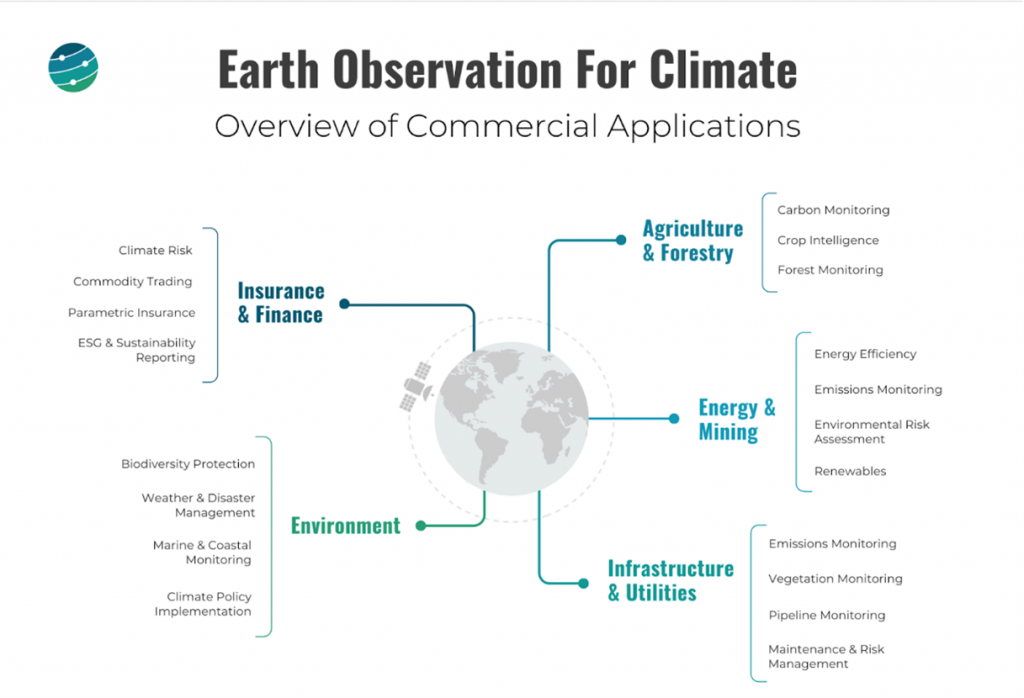
Earth Observation for Climate: Market Segments
The commercial landscape of EO for climate can be classified into three major segments: Climate Data, Climate Solutions, and Climate Applications.
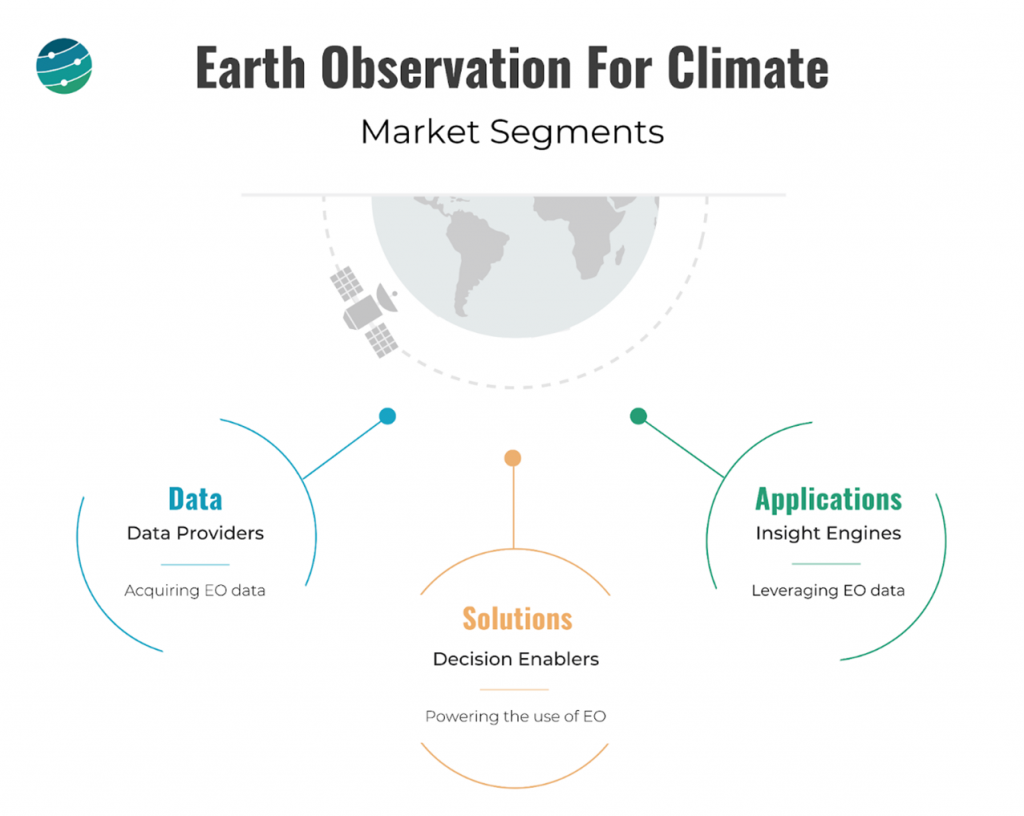
Climate Data: The Data Providers
This is the segment that is usually associated with the space industry – whether it is designing a remote sensing instrument to acquire a specific type of data or launching it on a satellite and downlinking the data to the ground (read cloud). There has been a lot of activity and funding allocated in this segment, thanks to the advancement in space technologies including reduced costs of access to space, miniaturization of satellites, and progress in cloud computing.
From a public sector point of view, there have been several satellites launched in the past few years, specifically focused on climate monitoring. One example is the Surface Water and Ocean Topography (SWOT) mission from NASA aimed at conducting the first global survey of the Earth’s surface water from space. Another example is the Sentinel-6 Michael Freilich mission from the European Organisation for the Exploitation of Meteorological Satellites (EUMETSAT). Thirdly, achieving NASA’s goal to improve ocean surface measurements, the Meteosat Third Generation weather satellite does continuous weather sensing over Europe and Africa among others.
In the meantime, the global private EO sector has seen significant growth, particularly with respect to the launch of commercial satellite constellations, focusing on multiple sensors aimed at monitoring the planet across the electromagnetic spectrum. The following figure provides an overview of the landscape as of October 2023, classified by the type of remote sensing instrument.
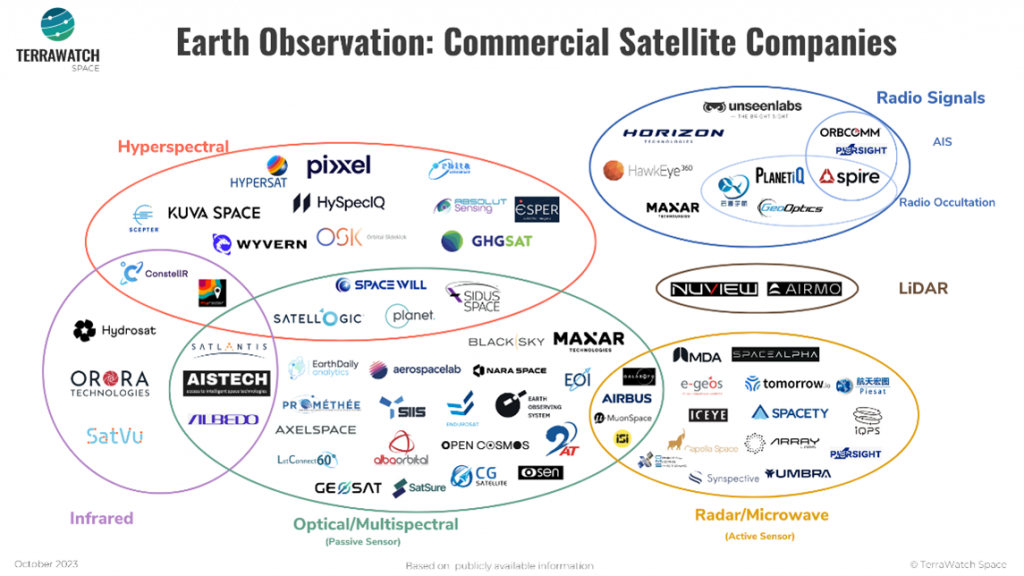
Climate Solutions: The Decision Enablers
This segment includes companies that create tools to empower EO users to create their own climate applications. They do so by making EO data accessible (through data marketplaces), interoperable (through interactive platforms), and usable (through ready-made analytics). Some examples of data marketplaces include UP42, SkyWatch and SkyFi, while EO platforms include Google Earth Engine, Sentinel Hub (acquired by Planet), and Microsoft’s Planetary Computer. In addition, there are several public portals that provide access to open data and data products, such as the Open Data Portal from NASA and the Copernicus Open Access Hub.
The Climate Solutions segment plays a significant role in bridging the gap between the availability of EO data and the creation of applications that can provide insights. In fact, many of the existing Climate Applications use some form of a Climate Solution to access, process, and make use of Climate Data.
Climate Applications: The Insight Engines
It is difficult to track down the commercial applications of EO for climate simply due to the sheer potential of satellite data when combined with aerial data from in-situ drones and other forms of data. This is the segment that receives the highest amount of venture capital funding and has seen an explosion in the number of companies founded globally. The concept of verticalization becomes more relevant in this segment as companies need to dive deeper into the needs of customers within a market vertical. Hence, EO simply becomes an underlying tool in the background that supports the development of such vertical-focused solutions.
Earth Observation for Climate: Commercial Landscape
The following figure contains a non-exhaustive list of companies from the global EO market. It shows a snapshot of the commercial landscape visually classified into those that are multi-vertical versus those that are verticalized, which is in line with the verticals presented in the section above. Note that in general, companies typically operate in more than one segment and in more than one vertical.
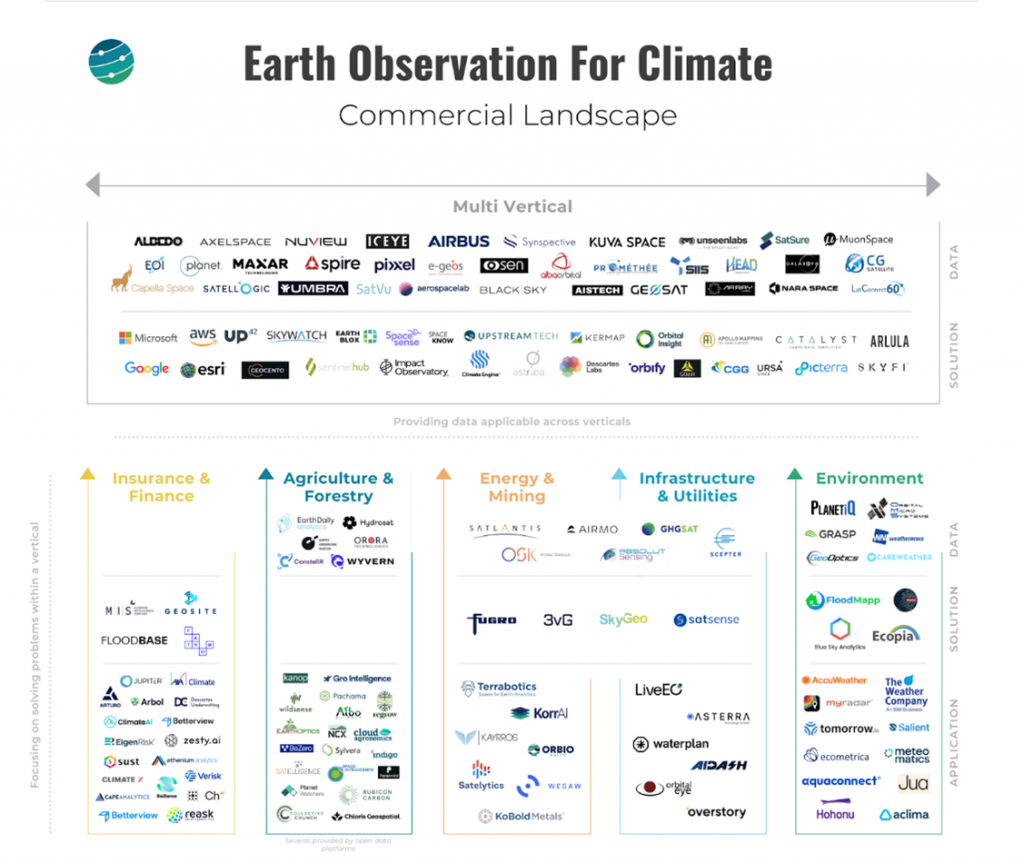
The Need to Demystify the Process of Converting EO Data into Insights
EO continues to increasingly enable impactful societal, economic, and environmental decisions, along with becoming a fundamental part of humanity’s response to climate change and sustainable development. As this happens, it is important for decision makers, policymakers, and business professionals to understand what goes on behind the scenes, especially with regards to how data downlinked from satellites is translated into useful insights for the end-user.
The following figure shows the discrepancy between the perceived understanding of how EO data is converted into actionable insights and the actual reality of the process which involves several steps such as calibration, validation, pre-processing, data fusion, and data processing, all of which could have significant implications on the resulting insights. Given that commercial EO-derived products will increasingly be used to make crucial decisions such as where individuals can buy property, how organizations can identify the climate risk for their assets, and what measures governments can take in regions with high wildfire risks, understanding the underlying technology becomes even more imperative.
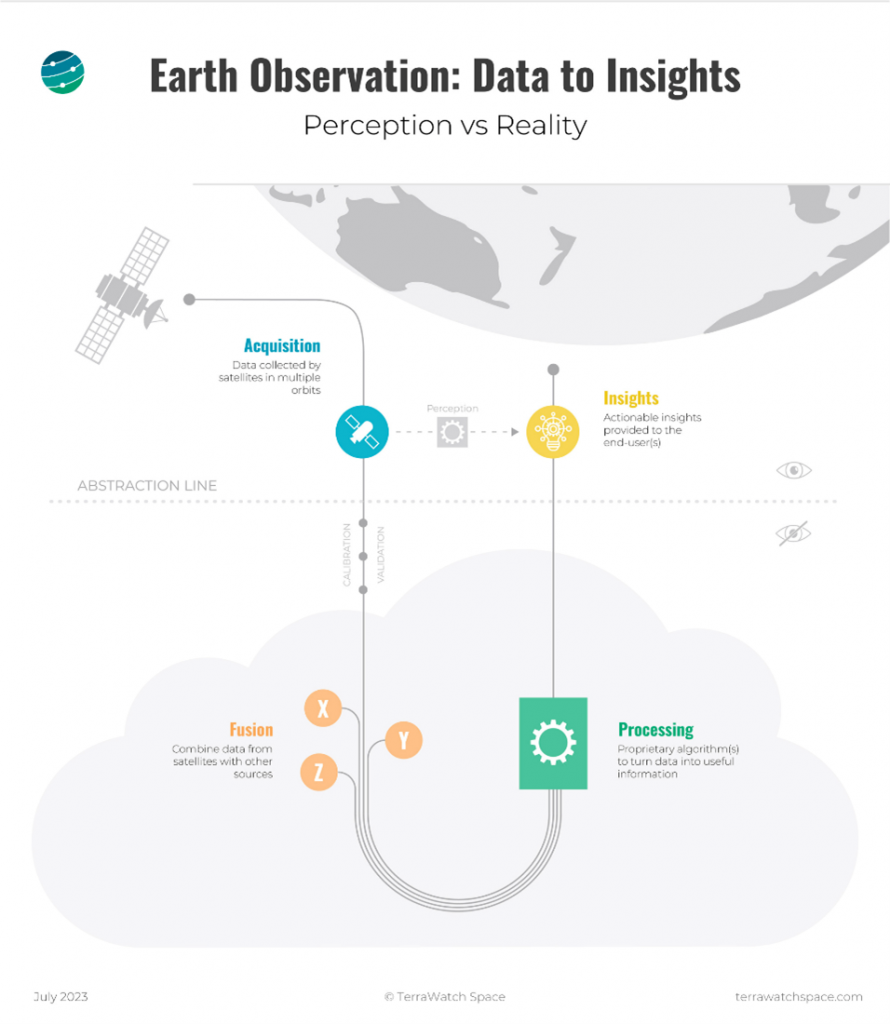
Concluding Note
As climate change continues to evolve, communicating about the importance of EO for building climate solutions becomes increasingly critical. The EO sector, both from a public and a private perspective is expected to rapidly grow over the coming years – with hundreds of EO satellites projected to launch and dozens of EO companies founded – most of which focus on solving the climate challenge. However, while this evolution of EO takes place, it is also vital to acknowledge the concept of a “knowledge-action gap,” in the climate change domain i.e., increased understanding of the causes of climate change has not resulted in meaningful action meant to mitigate it. Therefore, if the knowledge gathered from EO has not resulted in meaningful action, then until that happens, the value of EO is not fully realized.
Date Published: December 08, 2023




